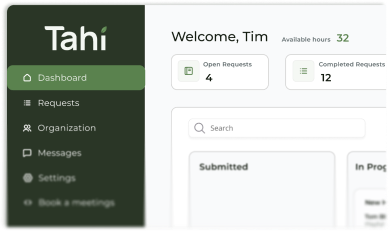Headless CMS
A headless CMS is a back-end only content management system that separates your content from where it's displayed, delivering it anywhere via an API.
What is a headless CMS and how does it work?
A headless Content Management System (CMS) is a way of managing digital content where the back-end (the 'body' where content is created and stored) is completely separate from the front-end (the 'head' where content is displayed). Think of it like this. A traditional CMS is an all-in-one package where the content database, design, and display are all bundled together.
A headless CMS, on the other hand, only handles the content. It doesn't care what the final website or app looks like. Instead, it makes the content available through something called an API (Application Programming Interface). Developers can then take this content and build any kind of front-end they want, like a website, a mobile app, or even a display on a smart fridge, to pull that content in. This approach offers ultimate flexibility for developers to use any technology they prefer for the presentation layer.
What is the difference between a headless CMS and Webflow?
The main difference comes down to integration. A headless CMS is a decoupled, back-end-only system. You get a place to store and organise your content, and that's it. You still need a separate team of developers to build your website's front-end from scratch and then connect it to the headless CMS to pull in the content.
Webflow, however, is an integrated platform. It combines a powerful, visual design tool (the front-end) with a user-friendly Webflow CMS (the back-end) in one seamless environment. This means you can design, build, and manage your website all in one place. Your marketing team can see live previews of content changes and can update the site without needing a developer's help, which is a huge advantage for staying agile.
When should a business use a headless CMS instead of Webflow?
Choosing a headless CMS is a strategic decision that makes sense in very specific, large-scale scenarios. It's the right tool if your business needs to publish the exact same content across a wide variety of different platforms simultaneously. For example, a large media company might use a headless CMS to push a news article to their main website, their iOS and Android apps, and their smart TV application all at once.
It's also a good fit for projects with highly specialised front-end requirements that simply cannot be built using existing web technologies. For the vast majority of marketing websites, SaaS businesses, and corporate sites, this level of complexity is unnecessary. The integrated nature of Webflow provides all the power and flexibility needed, but in a much more efficient and cost-effective package.
What are the disadvantages of a headless CMS for a marketing website?
For a typical marketing website, a headless CMS introduces several significant disadvantages. The biggest hurdles are increased complexity and cost. Because you're building two separate systems (a back-end and a front-end), you often need specialised developers for each, which increases team size, project costs, and timelines.
Another major drawback is the loss of agility for non-technical team members. With a headless setup, marketers can no longer make simple visual tweaks or see a live preview of how their content will look. Every small change, from updating a headline on a landing page to adjusting a button colour, requires a developer's intervention. This creates a bottleneck that can seriously slow down marketing campaigns and day-to-day operations.
Is a headless CMS the right strategic choice for my business?
For most businesses, the answer is probably no. While a headless CMS offers incredible flexibility for massive, multi-platform projects, it often comes with a heavy price tag in terms of cost, time, and complexity. The need to maintain separate front-end and back-end development teams can stretch resources and slow down your ability to react to market changes.
For marketing sites that need to be beautiful, high-performing, and easy for the whole team to manage, an integrated platform like Webflow is almost always the more strategic and efficient choice. It empowers your marketing team, streamlines your workflow, and gets your ideas to market much faster, without compromising on quality or design.
If you're weighing up these technical options and trying to find the right foundation for your business goals, it can feel a bit overwhelming. At Tahi Studio, we focus on building exceptional websites in Webflow because we believe it offers the best balance of power and practicality for businesses that are serious about growth. If you want a clear, honest opinion on the best path for your project, feel free to book a call with us.






